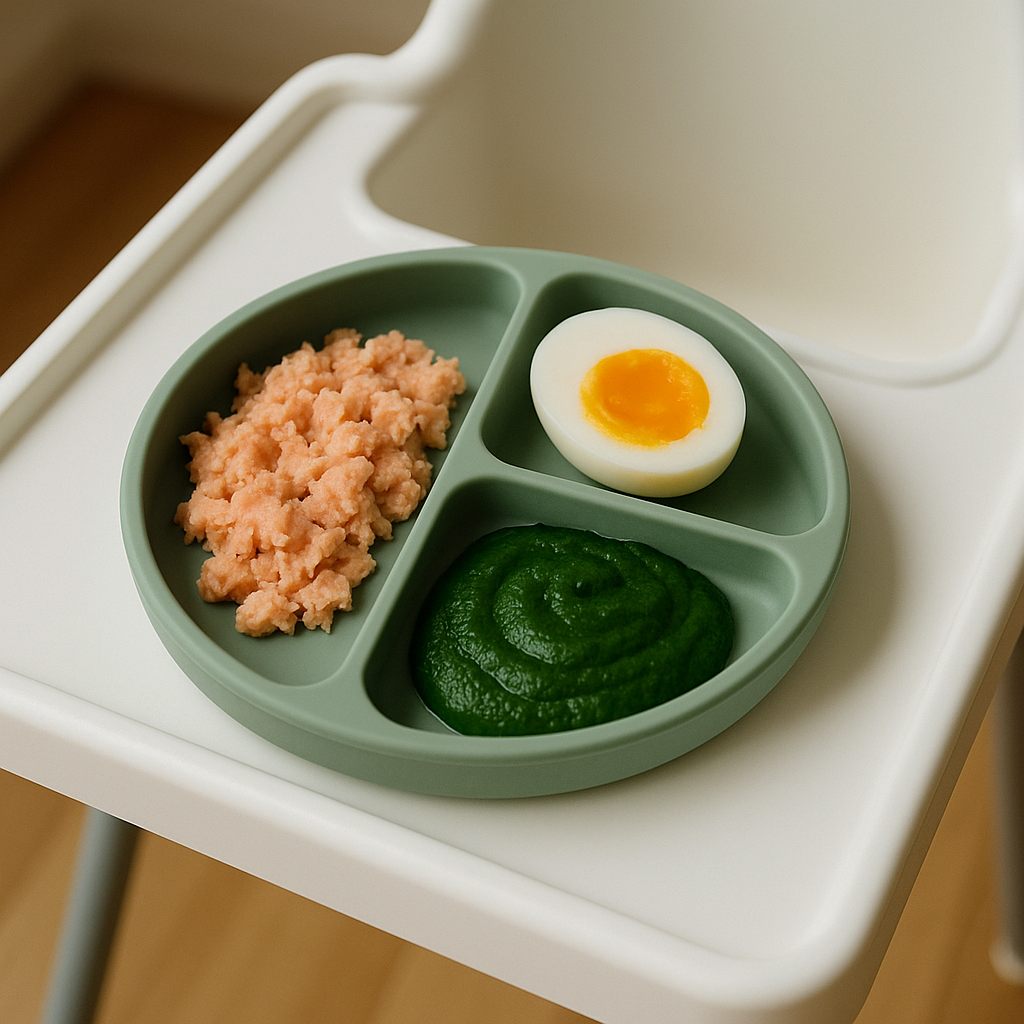Every hug, song, and spoonful you share with your baby ignites neural connections, shaping their language, memory, and confidence for life. Research highlights how responsive caregiving, interactive speech, nutrition, a nurturing environment, and skin-to-skin contact drive cognitive and emotional growth. Dive in for more!
- What Did the Bucharest Early Intervention Project Prove About Responsive Caregiving?
- Key Findings on Responsive Caregiving
- Implications of the Findings
- How Does Caregiver Speech Physically Wire the Language Centers?
- Which Nutrition Study Shows Specific Nutrients Supercharge Cognition?
- What Do the 2024 “Thrive Factors” Reveal About a Whole-Child Environment?
- Why Does Skin-to-Skin Contact Accelerate Neural Growth?
- Where Are the Research Gaps—and How Can You Stay Ahead?
- Research Gaps
- How Parents Can Act Now
- Your Top Questions, Answered
- Final Thoughts
What Did the Bucharest Early Intervention Project Prove About Responsive Caregiving?
The Bucharest Early Intervention Project (BEIP) compared Romanian orphans in institutional care to those in foster homes. It showed that responsive caregiving—attentive, personalized interactions—boosts child development. Institutional care was often impersonal, while foster care provided nurturing attention. See Alternatives for Abandoned Children.
Key Findings on Responsive Caregiving
The BEIP showed that responsive caregiving in foster care improves cognitive and emotional outcomes for children facing early neglect. Key findings:
- Higher IQ Scores: Foster care before age 2 led to 9-point higher IQ scores by age 8.
- Better Brain Activity: Foster kids showed healthier EEG patterns by age 8, reflecting improved neural growth.
- Stronger Bonds: Foster care promoted secure caregiver attachments, unlike institutional care.
- Serve-and-Return: Smiles and babbles in responsive interactions boosted brain development.
- Early Timing: Intervention before age 2 maximized gains.
Implications of the Findings
The BEIP showed responsive caregiving is critical for early child development. Institutional care lacked personalization, while foster care offered attentive interactions. Early neglect causes lasting harm, but responsive caregiving before age 2 reduces these effects and supports recovery.
For playful ideas, visit How Your Baby’s Brain Learns.

How Does Caregiver Speech Physically Wire the Language Centers?
Caregiver speech is often called “parentese” or “infant-directed speech.” It’s a special way of talking to babies. It uses a higher pitch, exaggerated intonation, and simple words. Here’s how it works:
Brain Wiring Through Sound: Caregiver speech stimulates key areas of the baby’s brain. These include the auditory cortex, which processes sound, Broca’s area, linked to speech production and Wernicke’s area, tied to understanding language. Repeated exposure, builds stronger foundation for language skills.
Neuroplasticity in Action: Babies’ brains are highly adaptable. Caregiver speech taps into this adaptability. It helps the brain build language networks. The brain keeps the most-used connections, like those from hearing speech. This makes language processing more efficient.
Turn-Taking and Feedback: Caregiver speech isn’t just one-sided. When a baby coos or babbles, the caregiver responds. This creates a back-and-forth exchange that teaches the baby the rhythm of communication. It encourages them to experiment with sounds and form words. It strengthens language circuits.
Social and Emotional Connection: Caregiver speech often includes eye contact, smiles, and touch. These help babies link words to emotions and objects. It makes language more engaging and easier to understand. It reinforces the brain’s wiring by connecting speech to real-world experiences.
Timing Is Critical: The first few years of life are a critical period for language development. Caregiver speech in this window has a strong effect. It shapes how language centers form and work. This influences skills foundation like speaking, understanding, and even reading later.
Quality and Individual Differences: Not all caregiver speech works the same way. Caregivers who use varied words make a bigger impact. Asking questions and responding actively helps. Every baby is different, though. Genetics, temperament, and environment play a role.
More tips wait in 10 Proven Ways to Boost Your Baby’s Intelligence.

Which Nutrition Study Shows Specific Nutrients Supercharge Cognition?
DHA and choline boost problem-solving and attention.
A 2021 review found that combined DHA and choline supplementation during infancy enhances hippocampal development, improving cognitive functions like problem-solving and attention. A 2024 meta-analysis of 54 studies confirmed DHA supplementation in the first year improves visual acuity and communicative skills. The study found that infants given standard formula had notably worse visual acuity at 12 months, as measured by visual evoked potential, compared to those fed DHA-supplemented formula. This suggests DHA may enhance visual development. A 2020 CDC report notes iron deficiency in 1 in 10 U.S. toddlers, which can impair attention.
Brain-Building Menu:
- Salmon or fortified formula (DHA, iodine)
- Egg yolks or beans (choline, B12)
- Fortified cereals or lentils (iron, zinc)
See how genes and diet team up in Nature vs. Nurture: How to Maximize Your Baby’s Intelligence.

What Do the 2024 “Thrive Factors” Reveal About a Whole-Child Environment?
Five key conditions drive significant brain volume growth by age 3.
A 2024 Washington University study scanned 232 toddlers and found that adequate nutrition, rich stimulation, consistent sleep, sensitive caregiving, and neighborhood safety explain over one-third of brain volume differences. These factors foster cognitive and social-emotional development, with a safe neighborhood amplifying playtime benefits by 22%. Nutrition provides essential building blocks, stimulation sparks neural connections, sleep consolidates learning, caregiving builds secure attachments, and a safe environment reduces stress, enhancing overall growth.
Parent Checklist:
- Daily Outdoor Strolls: Expose your child to new sights and sounds for sensory stimulation.
- Consistent Bedtime Routine: Maintain bedtime within a 30-minute window to support neural consolidation.
- Novel Exploration: Rotate simple toys weekly to encourage curiosity and problem-solving.
- Attentive Interactions: Respond promptly to your child’s cues to foster emotional security.
- Safe Home Setting: Create a calm, hazard-free environment to maximize developmental benefits.
Practical Example: Taking your toddler for a daily walk in a safe park not only boosts their exposure to new stimuli but also enhances the cognitive benefits of play by reducing stress, as supported by the study’s findings.
For deeper strategies, explore The Ultimate Guide to Boosting Your Baby’s Brain Power.
Why Does Skin-to-Skin Contact Accelerate Neural Growth?
Daily kangaroo care boosts brain development and bonding.
Regular skin-to-skin contact increases oxytocin and reduces stress, promoting neurodevelopmental regulation in full-term infants . A 2021 UNICEF review confirmed benefits like improved sleep, stable heart rate, and stronger parent-infant bonding, which support faster synaptogenesis and neural connectivity. These effects enhance cognitive and emotional growth by fostering a calm, secure environment. While specific claims about cortical thickening lack direct 2020–2025 evidence, related studies suggest skin-to-skin care supports brain development by reducing stress hormones.
At-Home Tips:
- Hold your diaper-clad baby on your bare chest for one hour daily after feeding.
- Use a light blanket for warmth and comfort.
- Turn off phones to maximize oxytocin release and bonding.
More bonding dos and don’ts appear in 7 Parenting Mistakes That Harm Your Baby’s Brain Growth.

Where Are the Research Gaps—and How Can You Stay Ahead?
When it comes to infants, two big unknowns stand out: screen time and the gut-brain axis. Here’s a new take on what’s missing and how parents can get ahead.
Research Gaps
- Screen Time: Experts suspect early exposure might slow language and thinking skills. A 2023 study hints at this, but we’re still short on big, solid data. Right now, the advice is clear—skip screens for kids under two, except for quick hellos over video.
- Gut-Brain Axis: Scientists are buzzing about how gut health might shape a baby’s mood or smarts.
How Parents Can Act Now
- Ditch the screen, grab a toy: Real play beats pixels for building brains. Think blocks or peek-a-boo.
- Keep an eye on gut science: No firm rules yet, but watching this space could pay off later.
- Stick to what’s proven: Cut through the noise with solid info.
Small shift, big win. Want more ideas? See Boosting Baby IQ: 5 Myths Debunked and Proven Facts can help.
Your Top Questions, Answered
-
When should I start reading to my baby?
From day 1. The rhythm of your voice primes the auditory cortex even before they focus their eyes on the page. -
Do pricey “genius” gadgets actually work?
No credible evidence. Human faces, varied play, and everyday conversation outperform electronic toys. -
Is sleep really that critical for brain growth?
Yes—especially REM. Night-time neural housekeeping cements the day’s new connections; skimping can blunt memory and mood. Learn more in Why the First 3 Years Are Critical for Your Baby’s Brain. -
How much talking is “enough” each day?
Roughly 30 conversational turns per waking hour. Think of it as narrating life, not lecturing—pause for your baby’s sounds and gestures.
Final Thoughts
Five ground-breaking studies point to one empowering truth: your loving presence, smart nutrition, safe routines, and warm touch physically build your baby’s brain. No upscale toy can match that. Keep science on your side—download the free Daily Brain-Boost Checklist inside The Ultimate Guide, and enjoy watching those million-a-second connections bloom.